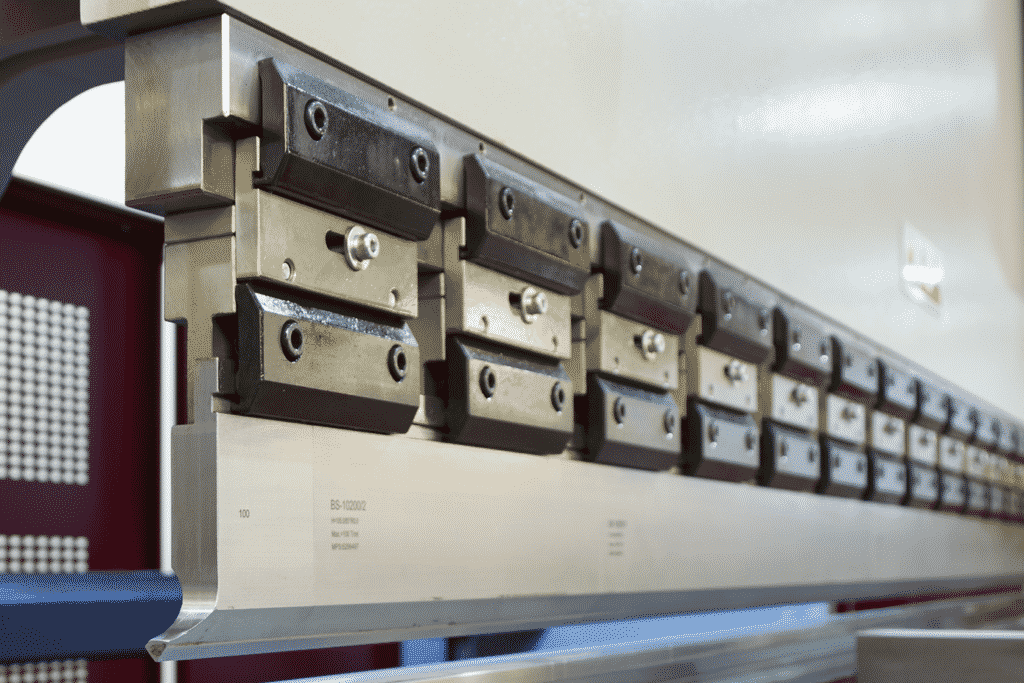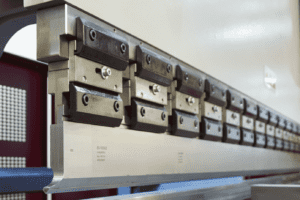You might well think the whole process of bending and forming sheet metal is relatively straightforward, surely it isn’t so challenging… is it?
You have your Press Brake, set up to bend your material exactly where you want it, at the exact angle that the job requires. Your forming is on-form, your numbers have been crunched and your trusty Press Brake is just waiting to do its thing.
But there is one vital thing that is easily overlooked and understanding how it works and more importantly how to set it up is vital. We are of course talking about the process of crowning.
Crowning comes in to play whenever long or large parts are bent, it can also be beneficial on longer, heavier Press Brakes and those at the top end of the power scale. When load is applied to form a bend, a degree of deflection occurs. This causes deformation and that means that if your bend is spot-on accurate at the ends, thanks to the servo-hydraulic system and pistons at the ends of the beam, it might not always be the case nearer to the centre of your workpiece.
That isn’t a case of operator error or an issue with your Press Brake; it is more a simple fact of material science and physics. The process of compensating for that phenomenon is, in a nutshell crowning.
To ensure a consistent bend along the full length of a workpiece a crowning system is crucial, it can either be in the Press Brake’s beam, in the table itself or even both. It ensures the angles in the centre of your beam match those at the ends, compensating against that deflection exactly where compensation is needed. Hydraulic crowning tends to be built in to today’s Press Brakes; there are also CNC wedge style systems that might be offered as an add-on by the tooling supplier or Press Brake manufacturer.
Often these wedges are adjusted along the length of the workpiece being folded, if you need an 85° bend that looks accurate at the ends but perhaps may be two or three degrees less in the centre for example, then the wedges in the centre can be tightened (bringing them up slightly) in the centre to compensate for the deflection that has caused it.
Those wedges might be raised manually by using an Allen key, by entering values on a digital readout or by motorised control, which method you use will vary depending on your Press Brake, but they are all different means to achieve the same goal.
More bend where it is needed to achieve accuracy, consistency and ultimately; much better results.
There are other benefits too, that go beyond the obvious ones above. That level of consistency that comes with crowning has the knock-on effect of reducing setup procedures, operator interventions or the need for high skilled operation, crowning also reduces waste significantly. CNC crowning even creates the calculations needed for crowning a given material. Shimming, manual die adjustment and overcoming machine deflection can all be a time consuming exercise in trial and CNC crowning has the potential to completely erase them…
These benefits extend beyond the folding process – if your parts also need welding, with accurate bends your parts will fit up much more tightly, making welding far easier. With smaller gaps to fill, parts can be welded faster, coupled with faster bending, through time-saving the cost per component is rapidly reduced.
Today’s crowning systems are both precise and ultra-capable of handling modern high tensile materials, they also have the ability to place the crowning exactly where needed on your sheet metal.
Press Brake crowning is no longer a dark art, or a necessary hassle. Modern Press Brakes make it simple and the benefits are there for all to see…
Our knowledge base expert Nigel shows us everything we need to know over on our YouTube channel with this detailed visual guide on How to Manually Adjust and Setup Crowning on a Press Brake. For any other questions or advice about CNC crowning and our extensive range of Morgan Rushworth Press Brakes, Click tap or call us today.
Article Last Updated 11/11/2024
Published 18th September 2019


